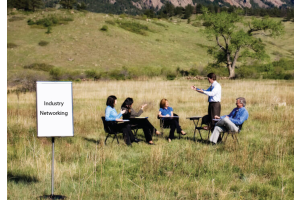The Growing Challenge Course Industry

The challenge course industry is a rapidly growing segment of the outdoor recreation industry. In the United States, the industry is estimated to be worth $1 billion and is growing at a rate of 10% per year. Challenge courses are used for a variety of purposes, including team building, leadership development, and personal growth. They are also increasingly being used in schools and other educational settings.
There are a number of trends driving the growth of the challenge course industry. One trend is the increasing popularity of outdoor recreation activities. More and more people are looking for ways to get outdoors and experience the benefits of nature. Challenge courses offer a safe and challenging way to do this.
Another trend is the growing demand for team building and leadership development programs. Businesses and organizations are increasingly recognizing the value of these programs in helping their employees work better together and achieve their goals. Challenge courses are a proven way to build teamwork and leadership skills.
Finally, the challenge course industry is also benefiting from the increasing popularity of experiential learning. Experiential learning is a type of learning that takes place through hands-on experiences. Challenge courses are a perfect example of experiential learning. They provide participants with the opportunity to learn through challenges and experiences.
The challenge course industry faces a number of challenges, including:
- The high cost of installation and maintenance. Challenge courses can be expensive to install and maintain. This can be a barrier for some organizations that are interested in using challenge courses.
- The risk of injury. Challenge courses can be dangerous if they are not properly designed and maintained. This can be a concern for some organizations that are considering using challenge courses.
- The lack of qualified instructors. There is a shortage of qualified instructors who are trained to use challenge courses. This can make it difficult for some organizations to find qualified instructors to lead their challenge course programs.
Despite these challenges, the challenge course industry is poised for continued growth in the years to come. The industry is expected to grow at a rate of 10% per year for the next five years. This growth will be driven by the increasing popularity of outdoor recreation, the growing demand for team building and leadership development programs, and the increasing popularity of experiential learning.
Some of the key players in the challenge course industry include:
- Experiential Systems
- ACCT - Association for Challenge Course Technology
- PRCA - The Professional Ropes Course Association
- High Five Adventures
- Challenge Works
- Experiential Resources
The short-term forecast for the challenge course industry is positive. The industry is expected to continue to grow at a rate of 10% per year for the next five years. The long-term forecast for the industry is also positive. The industry is expected to continue to grow as more and more people recognize the benefits of challenge courses.
Current events and future developments could have a significant impact on the challenge course industry. For example, the COVID-19 pandemic has had a negative impact on the industry. Many challenge courses were forced to close during the pandemic, and some are still struggling to recover. However, the industry is expected to rebound in the years to come.
Another potential impact on the challenge course industry is the increasing popularity of virtual reality (VR). VR is a technology that allows users to experience simulated environments. Some people believe that VR could eventually replace challenge courses. However, it is unlikely that VR will completely replace challenge courses. VR is a great way to experience new environments, but it cannot provide the same level of physical challenge and social interaction as a traditional challenge course.
Overall, the challenge course industry is a growing and dynamic industry. The industry is expected to continue to grow in the years to come, driven by the increasing popularity of outdoor recreation, the growing demand for team building and leadership development programs, and the increasing popularity of experiential learning.








